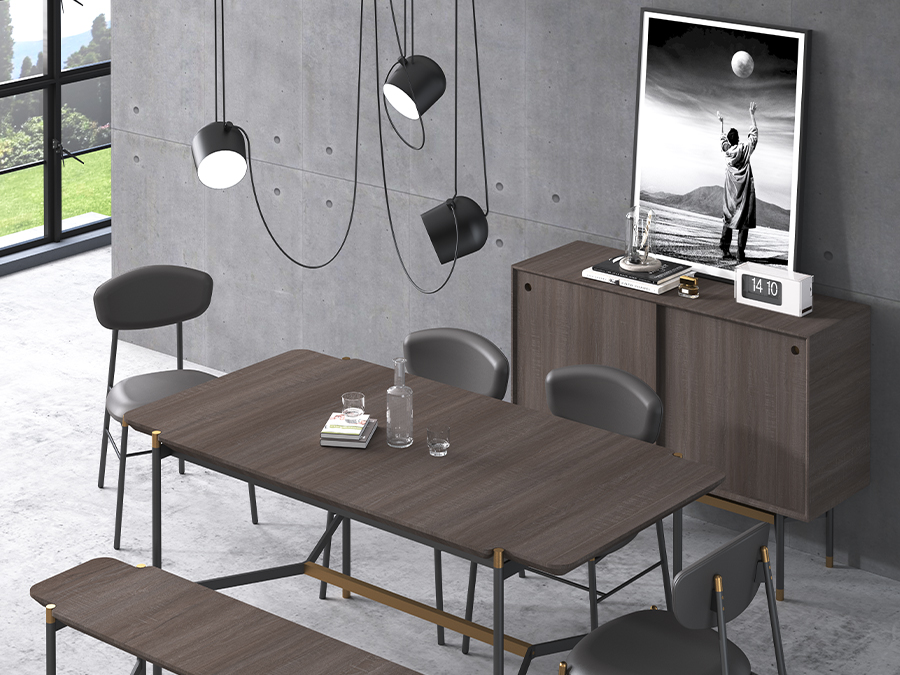Melamine Impregnated Paper (MIP) stands at the forefront of sustainable interior design and construction practices, offering a versatile and eco-friendly solution for enhancing spaces while minimizing environmental impact. At its essence, MIP consists of a decorative paper impregnated with melamine resin, fused under heat and pressure onto a wood-based substrate such as particleboard or medium-density fiberboard (MDF). This composite material not only replicates the natural aesthetics of wood grains, stone textures, and various patterns but also embodies several key advantages that underscore its contribution to sustainability.
One of the primary environmental benefits of MIP lies in its efficient use of resources. By utilizing wood fibers sourced from responsibly managed forests, MIP helps to conserve natural resources and supports sustainable forestry practices. Unlike solid wood, which often requires harvesting mature trees, the substrates used in MIP are derived from smaller, fast-growing trees or wood residues, reducing pressure on old-growth forests. This approach aligns with global efforts to promote sustainable resource management and biodiversity conservation.

Moreover, MIP enhances the longevity and durability of interior components such as furniture, cabinetry, and decorative panels. The melamine resin coating provides exceptional resistance to wear, scratches, and moisture, extending the lifespan of products and reducing the need for frequent replacements. This durability not only enhances cost-effectiveness for consumers but also minimizes waste generation over time. By choosing MIP-covered surfaces, designers and homeowners contribute to a more sustainable built environment by reducing the overall environmental footprint associated with interior renovations and furnishings.
In terms of production, MIP demonstrates energy efficiency compared to alternatives like High-Pressure Laminate (HPL) or solid wood. The manufacturing process of MIP requires less energy input and results in lower greenhouse gas emissions, contributing to a more environmentally friendly production cycle. Furthermore, manufacturers often prioritize reducing volatile organic compound (VOC) emissions during production, thereby supporting healthier indoor air quality in residential, commercial, and institutional spaces where MIP is utilized.
The recyclability of MIP-covered products further enhances its sustainability profile. At the end of their useful life, components such as particleboard or MDF substrates can be recycled or repurposed, diverting materials from landfills and promoting a circular economy approach. Some manufacturers even incorporate recycled content into their MIP products, further reducing the environmental impact associated with raw material extraction and processing.
From a design perspective, MIP offers unparalleled versatility and customization options, allowing designers to achieve a wide range of aesthetic visions without compromising sustainability goals. Whether mimicking the warmth of natural wood or the sleekness of modern surfaces, MIP enables designers to create environmentally responsible interiors that meet the functional and aesthetic preferences of their clients.
Certifications such as Forest Stewardship Council (FSC) and compliance with sustainability standards like LEED (Leadership in Energy and Environmental Design) underscore the commitment of MIP manufacturers to environmental stewardship. These certifications ensure that the materials used in MIP production are sourced responsibly, promoting transparency and accountability throughout the supply chain.
Melamine Impregnated Paper (MIP) represents a pivotal innovation in sustainable interior design and construction practices. Through efficient resource utilization, enhanced durability, low environmental impact in production, and recyclability, MIP contributes significantly to reducing the ecological footprint of interior spaces. As the demand for sustainable building materials continues to grow, MIP stands as a testament to the synergy between aesthetic appeal and environmental responsibility in modern architecture and design.


 English
English русский
русский











